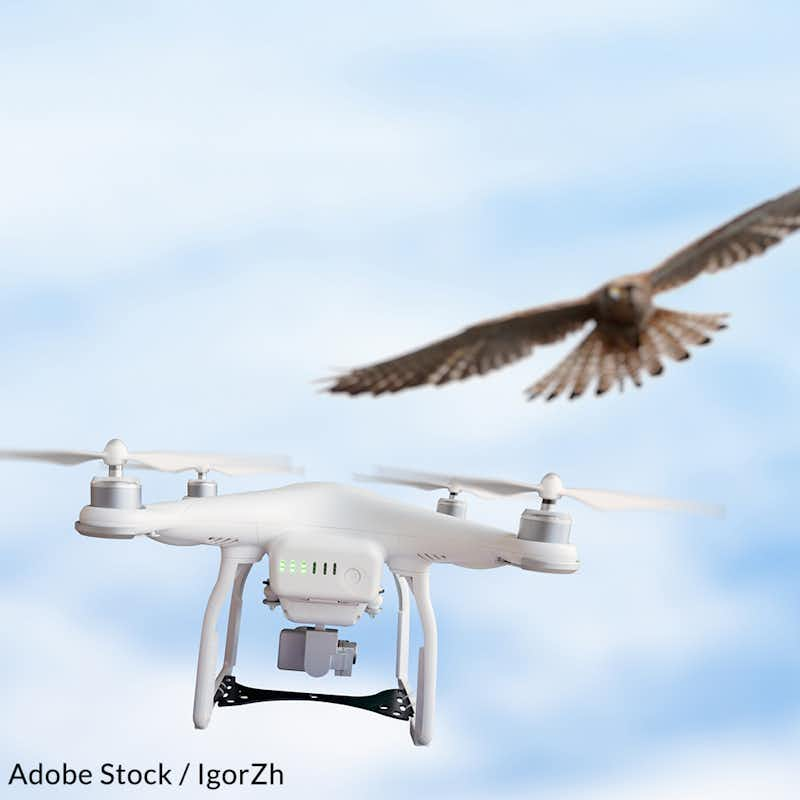Keep Drones Out Of Protected Wildlife Preserves
23,045 signatures toward our 50,000 Goal
Sponsor: The Animal Rescue Site
Tell the FAA to tighten its regulations and ban the use of drones over federally protected lands.

Drone photography has made it possible for many of us to get up close and personal with wildlife, watching them behave in ways we may otherwise never have a chance to see.
The reality is, many of these animals are running for their lives.
When animals come into contact with drones, they may experience physiological changes such as an increased heart rate, behavioral responses such as running or flying away, or even suffer stress that could disrupt their reproductive process. If they decide to avoid specific areas as a result of frequent disturbing drone encounters, this could fragment and ultimately damage the whole population1.
A study on black bears in Minnesota measured bears' heart rates by sensors implanted in their bodies. The sensors recorded significant spikes in blood pressure when a bear was surprised by the drone. Big boosts occurred in a female bear who had recently gone into her den to hibernate, and two others who had to chase their young, frightened by the drone, into another bear's home range2.
There are several ways irresponsible drone use could cause harm to avian species, including disrupting nests, provoking attacks, interrupting feeding, and causing midair collisions3.
In June 2020, during the COVID-19 pandemic, about 3,000 elegant tern eggs were abandoned at a Southern California nesting island after a drone crashed and scared off the birds. The drones were flown illegally over the Bolsa Chica Ecological Reserve in Huntington Beach and one of them went down in the wetlands, causing one of the largest-scale abandonment of eggs ever at the reserve4.
"Many people just want exciting video footage, and don't think about how it may be affecting animals," says Gustavo Lozada, technology manager for The Nature Conservancy in Colorado6. "There was a recent video that showed an eagle attacking a drone. And a lot of the social media reaction made it like the eagle defeated the drone. That eagle was probably hurt bad or even killed by that encounter."
Drones are only of value to research and conservation if they capture the natural behaviors of wildlife, but there are few drone operators who are capable of recording that footage without disturbing and potentially endangering animals.
The Federal Aviation Administration provides oversight on the rules regarding drone usage within the U.S.7 Sign the petition below and demand the FAA strengthen its drone regulations by banning drones in federally protected wildlife preserves outside of special permission for research or the benefit of the animals within.
- Margarita Mulero Pazmany, The Conversation (20 November 2018), "Viral bear video shows how drones threaten wildlife — and what to do about it."
- Jennifer S. Holland, National Geographic (25 August 2015), "How Drones Are Affecting Wildlife in Surprising Ways."
- Melissa Mayntz, The Spruce (26 December 2020), "The Impact of Drones on Birds."
- Martin Wisckol, The Orange County Register (3 June 2021), "Illegal drone scares terns, which abandon 2,000 eggs on Bolsa Chica nesting island."
- Matthew L. Miller, Cool Green Science (30 September 2019), "Think Drones are Bad for Wildlife? These Videos May Change Your Mind."
- Federal Aviation Administration (16 April 2021), "Unmanned Aircraft Systems (UAS)."
The Petition:
To the FAA administrator,
The increase in drone photography in recent years has put many species in danger across the U.S.
Even though drone photography is often banned on the grounds of individual wildlife preserves, there are still those who break the rules every year.
When animals come into contact with drones, they may experience physiological changes such as an increased heart rate, behavioral responses such as running or flying away, or even suffer stress that could disrupt their reproductive process. If they decide to avoid specific areas as a result of frequent disturbing drone encounters, this could fragment and ultimately damage the whole population.
During the COVID-19 pandemic, about 3,000 elegant tern eggs were abandoned at a Southern California nesting island after a drone crashed and scared off the birds. The drones were flown illegally over the Bolsa Chica Ecological Reserve and one of them went down in the wetlands, causing one of the largest-scale abandonment of eggs ever at the reserve.
This type of ecological disruption can wreak havoc on native and migratory species. I demand you strengthen the regulations on drone usage and ban the operations of drones in federally protected wildlife preserves outside of special permission for research or the benefit of the animals within.
Sincerely,